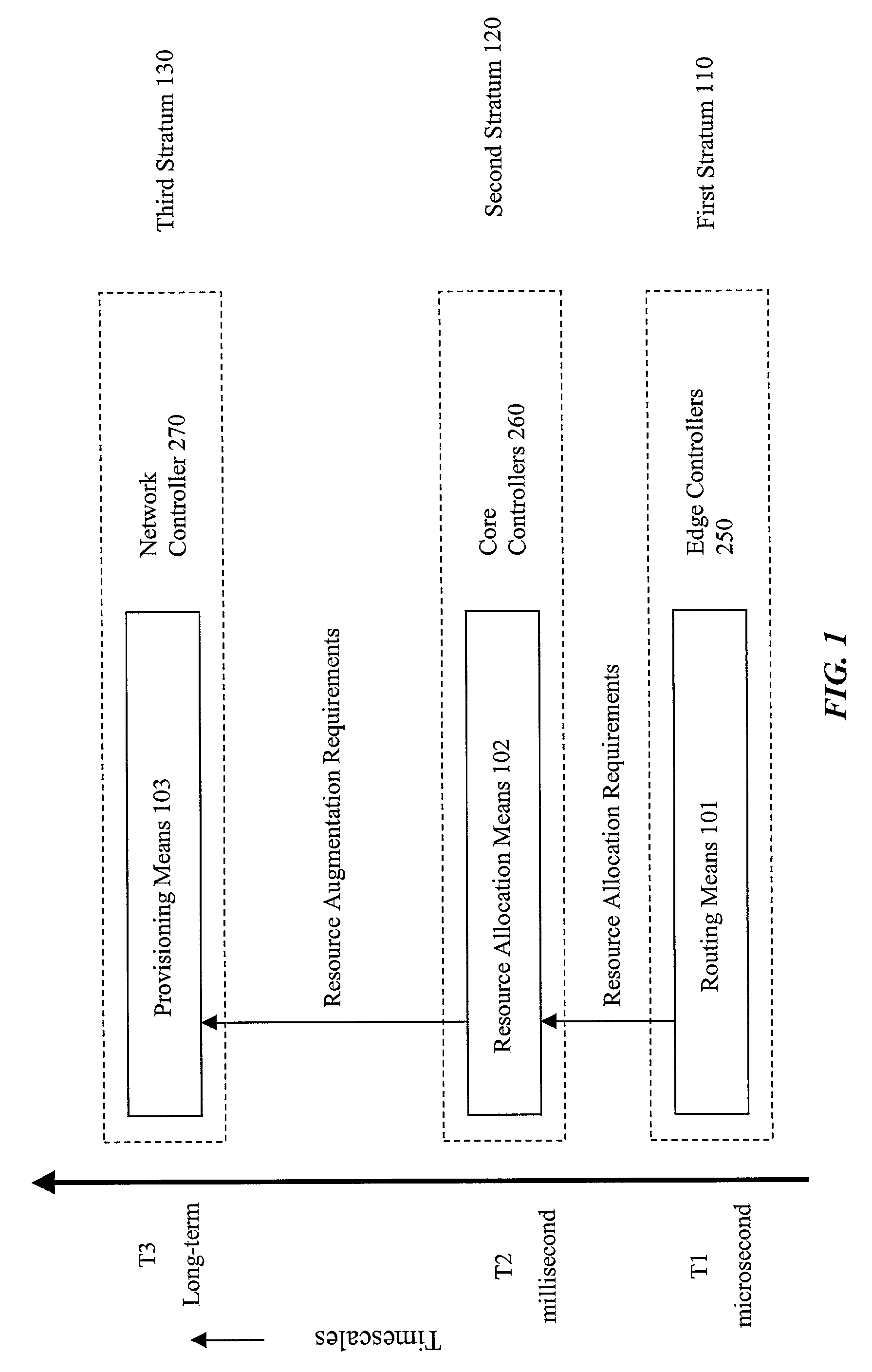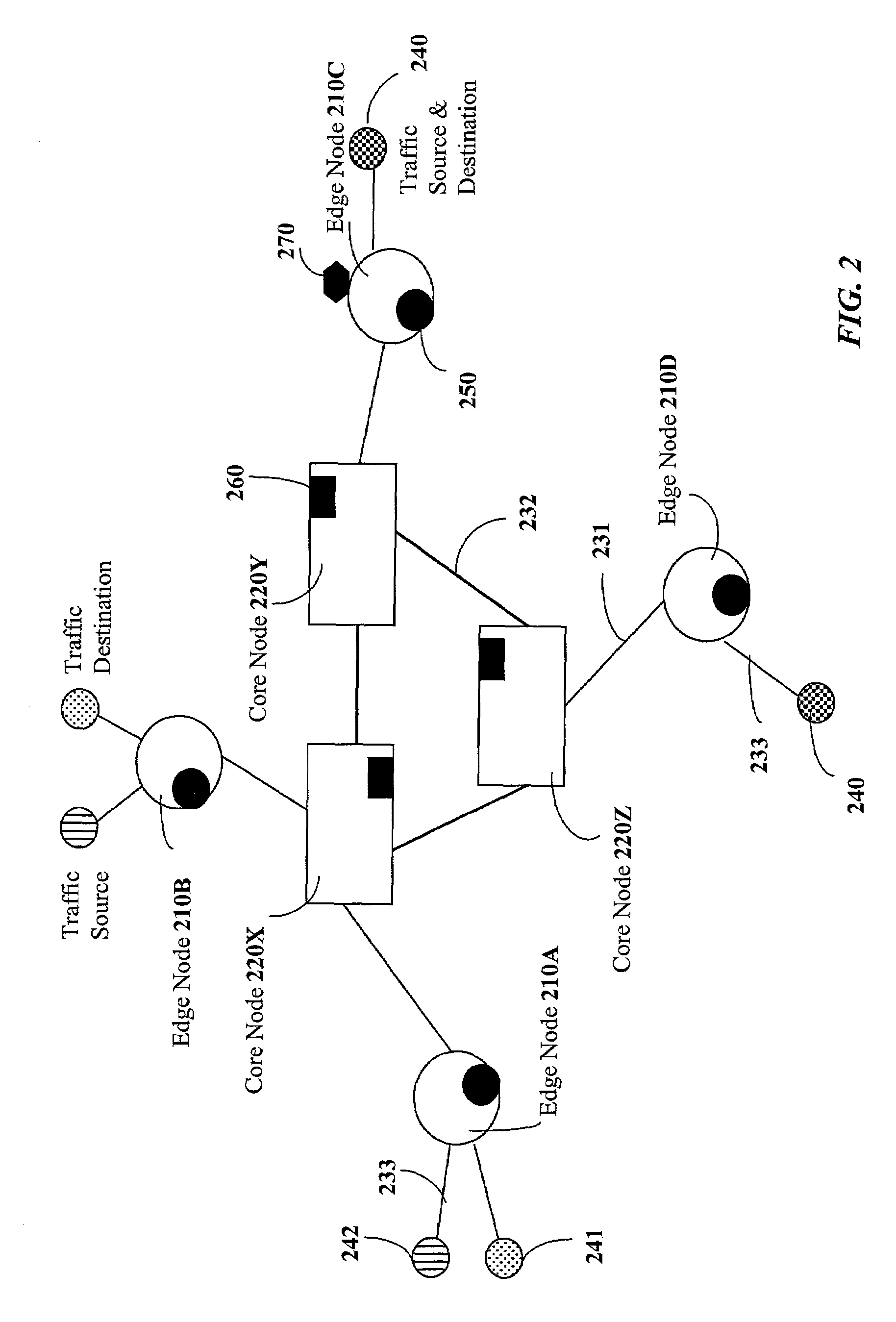System and method for network control and provisioning
a network control and provisioning technology, applied in the field of communication networks, can solve the problems of inability to accurately characterize traffic at both microscopic and macro level in the rapidly evolving data network, and inability to accurately characterize traffic at both microscopic and macro level, and achieve the effect of high degree of automated network provisioning
- Summary
- Abstract
- Description
- Claims
- Application Information
AI Technical Summary
Benefits of technology
Problems solved by technology
Method used
Image
Examples
Embodiment Construction
Multi-Stratum Multi-Timescale Network
[0044]FIG. 1 illustrates a functional representation of a multi-stratum multi-timescale network according to an embodiment of the present invention. The example in FIG. 1 comprises three strata and three timescales, each timescale being associated with a stratum.
[0045]Routing means 101 operates at a first stratum 110 on a first timescale T1. Although the first timescale T1 is shown as being in the order of microseconds, other timescales or ranges of times may alternatively be used. The only requirement with respect to the timescales according to an embodiment of the present invention is that each successive timescale in said network be coarser than the previous timescale. A second timescale is said to be coarser than a first timescale if the mean time interval between consecutive actions associated with said second time scale is appreciably higher than the mean time interval between consecutive actions associated with said first timescale, said a...
PUM
 Login to View More
Login to View More Abstract
Description
Claims
Application Information
 Login to View More
Login to View More - R&D
- Intellectual Property
- Life Sciences
- Materials
- Tech Scout
- Unparalleled Data Quality
- Higher Quality Content
- 60% Fewer Hallucinations
Browse by: Latest US Patents, China's latest patents, Technical Efficacy Thesaurus, Application Domain, Technology Topic, Popular Technical Reports.
© 2025 PatSnap. All rights reserved.Legal|Privacy policy|Modern Slavery Act Transparency Statement|Sitemap|About US| Contact US: help@patsnap.com



